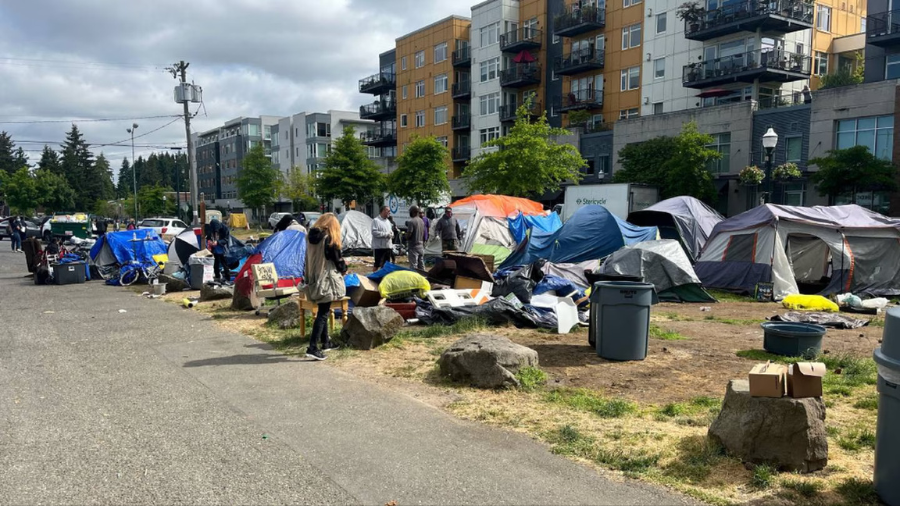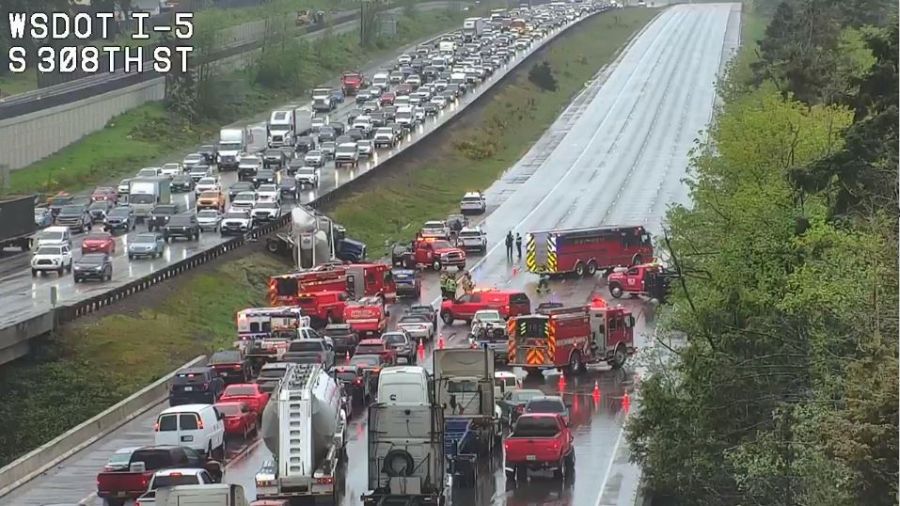Mass transit ridership on the rise around Seattle
Feb 21, 2017, 3:35 PM | Updated: 5:09 pm

(Sound Transit)
(Sound Transit)
Mass transit ridership around the Seattle region showed yet another year of gains, boasting an estimated 150 million riders in 2016.
That’s the latest data, collectively, from King County Metro and Sound Transit. It represents a 5-percent bump in overall mass transit ridership throughout the King County region over the prior year.
Related: More people walking, using transit to get into downtown Seattle
“Overall, our integrated transit system … has shown in 2016 record growth,” said King County Councilmember Rod Dembowski. “We’re leading the nation in terms of transit ridership increases.”
Overall rides on rail throughout the region jumped by eight million between 2015-16. Part of that could be because rail absorbed bus riders near light rail stations. Bus ridership dropped slightly from 121.8 million to 121.5 million. That’s still not enough, however, to account for the millions more on area rail lines.
“The bus system has held about steady, in part because a lot more folks have been able to use the light rail system with the opening of the Capitol Hill and UW stations,” Dembowski said.
• Metro transit (buses and the South Lake Union streetcar): 121.5 million rides in 2016 (down from 121.8 million in 2015)
• Sound Transit (Link light rail, Sounder, Sound Transit Express): 42.7 million rides (34.7 million in 2015)
• Metro RapidRide: 20.7 million rides across six routes (10 percent jump from 2015)
• Link Light Rail: 19.1 million rides in 2016
• Sound Transit express routes (operated my Metro): 9.7 million riders in 2016
“Transit ridership continues to grow, and we’re meeting the need by offering more and better service, improving reliability, and making transfers between bus and rail as simple as possible,” said King County Executive Dow Constantine, who is also a Sound Transit board member. “More mobility means better quality of life, and this year we expect thousands of new riders to reclaim precious time and money by leaving the car by the curb and joining their neighbors on transit.”
Mass transit ridership around Seattle
A recently-released commuting study shows that when it comes to downtown Seattle, mass transit and walking accounts for 70 percent of commuting. And that is after about 45,000 new jobs were added to that area.
Jonathan Hopkins, executive director of Commute Seattle, recently told MyNorthwest:
If they have to drive to work, or really want to drive to work, they have to hope we are successfully giving other people options not to. If we want the economy to grow, and jobs to come to Seattle instead of some other city, then you have to be able to get around. If everybody drives, nobody is getting anywhere … everybody is just stuck.
Light rail effect
Rail lines benefited from new stations at Capitol Hill and the University District. Light rail ridership dramatically rose by 66 percent immediately after the two stops opened in March 2016.
It seems that people near light the stations are hopping a bus to travel the short distance to use light rail.
“We’re actually providing a lot more frequent (bus) service – we’re delivering those people to light rail,” Dembowski said. “Before you might have transferred from one bus to another bus. With our expanded light rail system today, you might get off a bus and get on a light rail line.”
One example is the Bryant neighborhood, which saw about 800 more weekday riders in 2016. Bus ridership in nearby Maple Leaf rose by 6 percent. Bryant and Maple Leaf are just north of the University District — the location of the most northern station for Link Light Rail. But the University District’s status will soon change when Northgate opens.
Despite the increased ridership, Dembowski notes that the region is still behind the curve when it comes to providing adequate mass transit — there’s room to grow.
“We’re still not able to fully meet our transit demands,” he said. “We are trying to continue to grow the system. Light rail will really help.”
“One of the things we’re struggling with is providing enough coaches and drivers to meet the demand at peak periods – peak in the morning, and peak in the afternoon,” Demobowski said. “We are experiencing some growing pains.”













